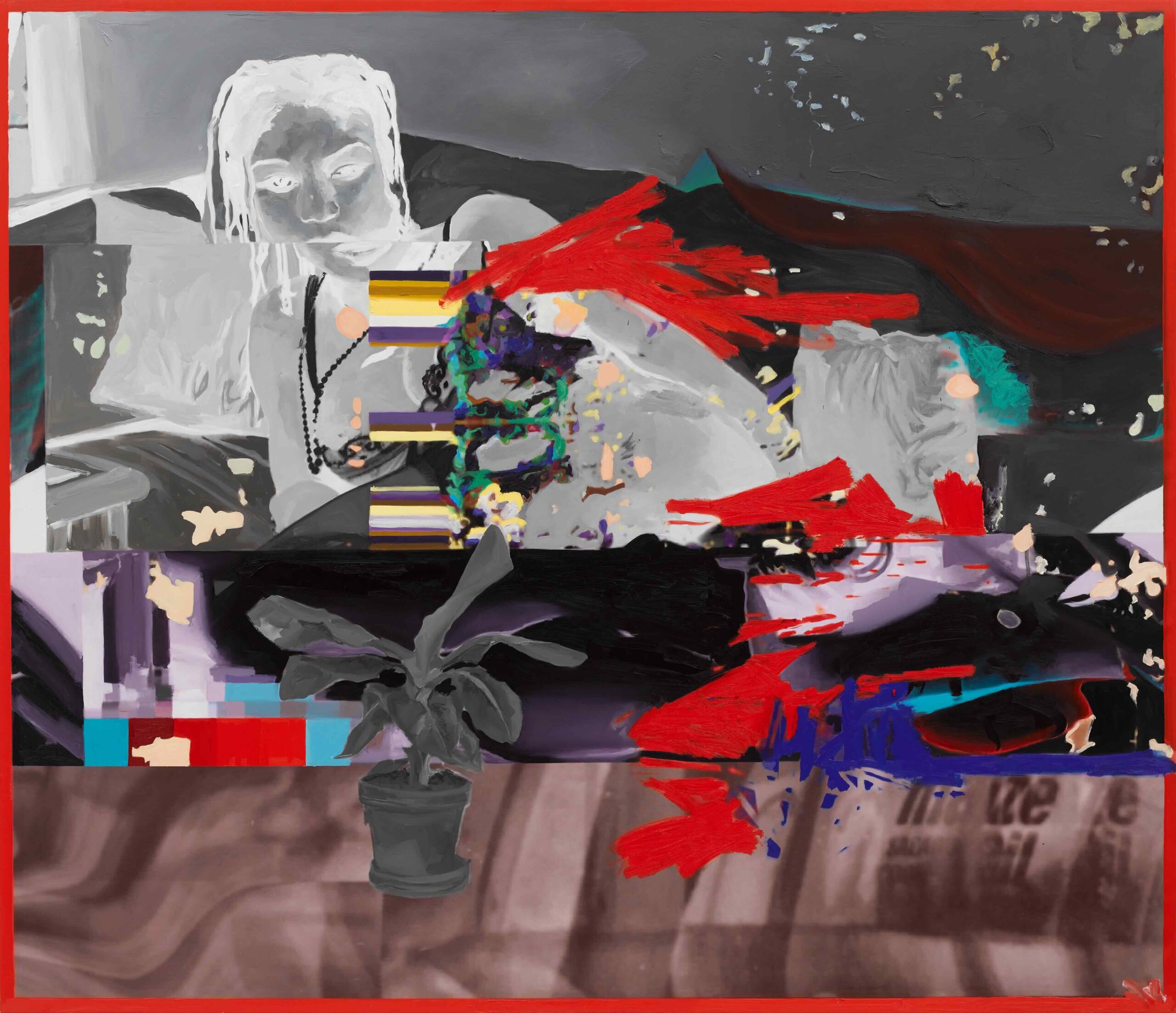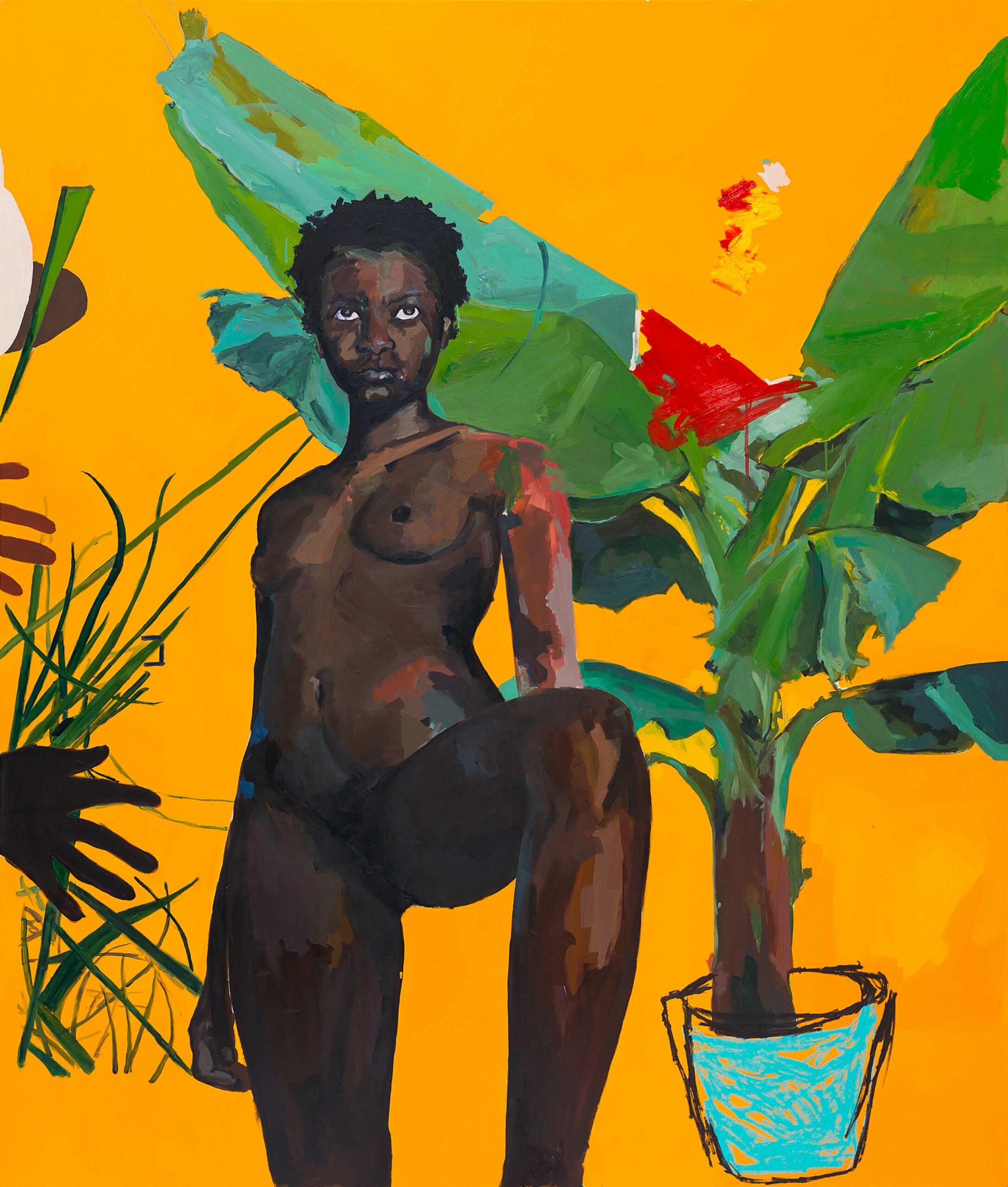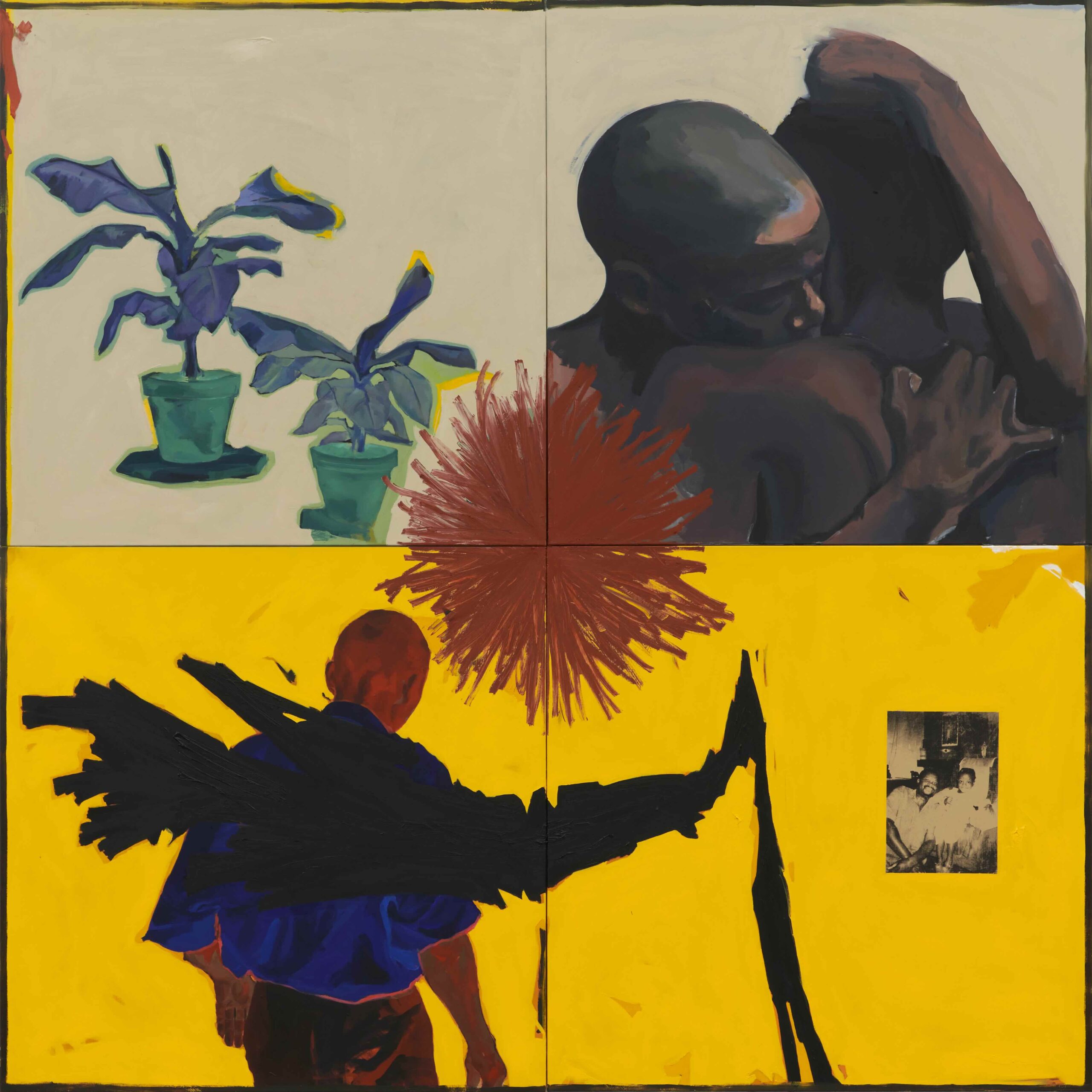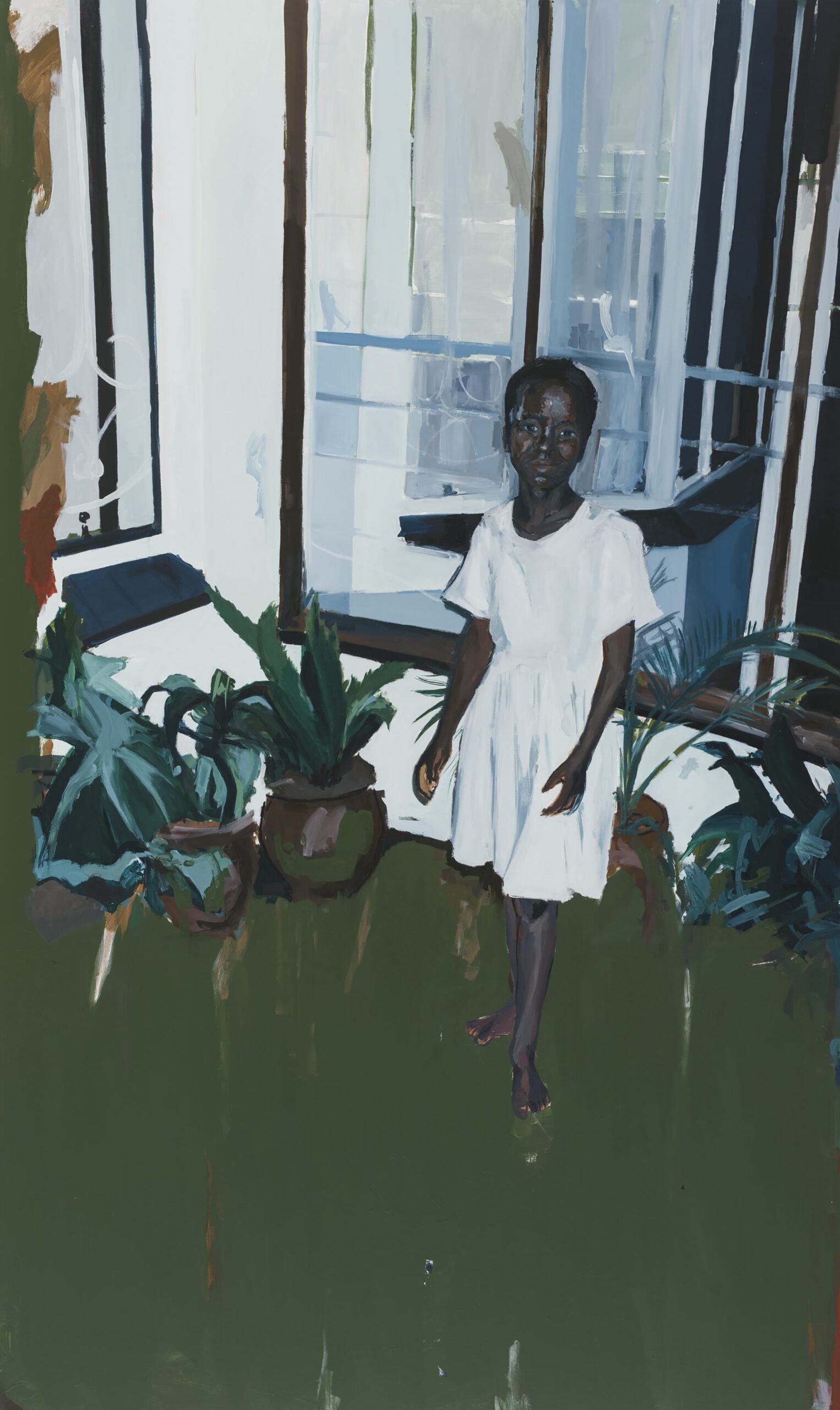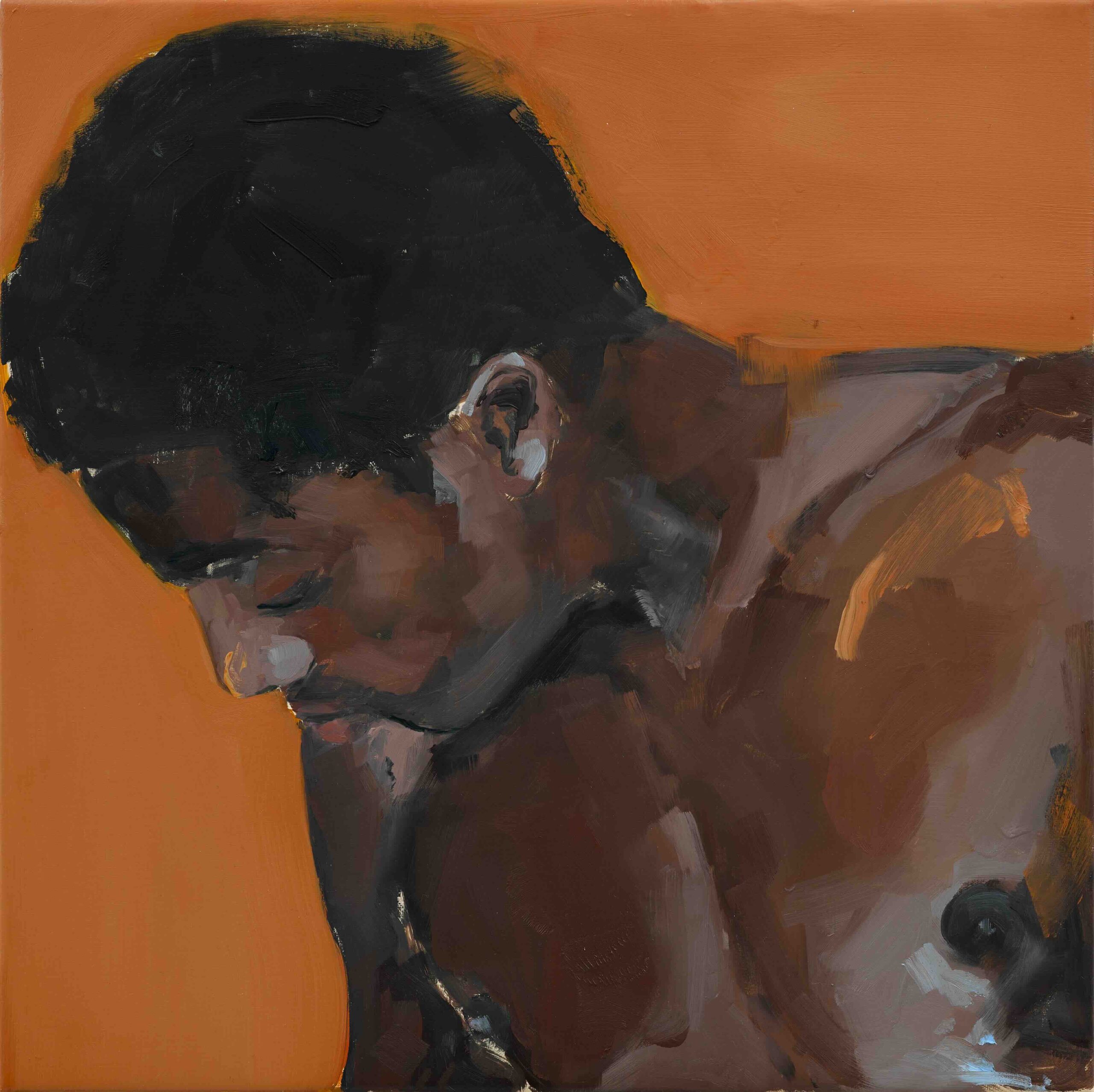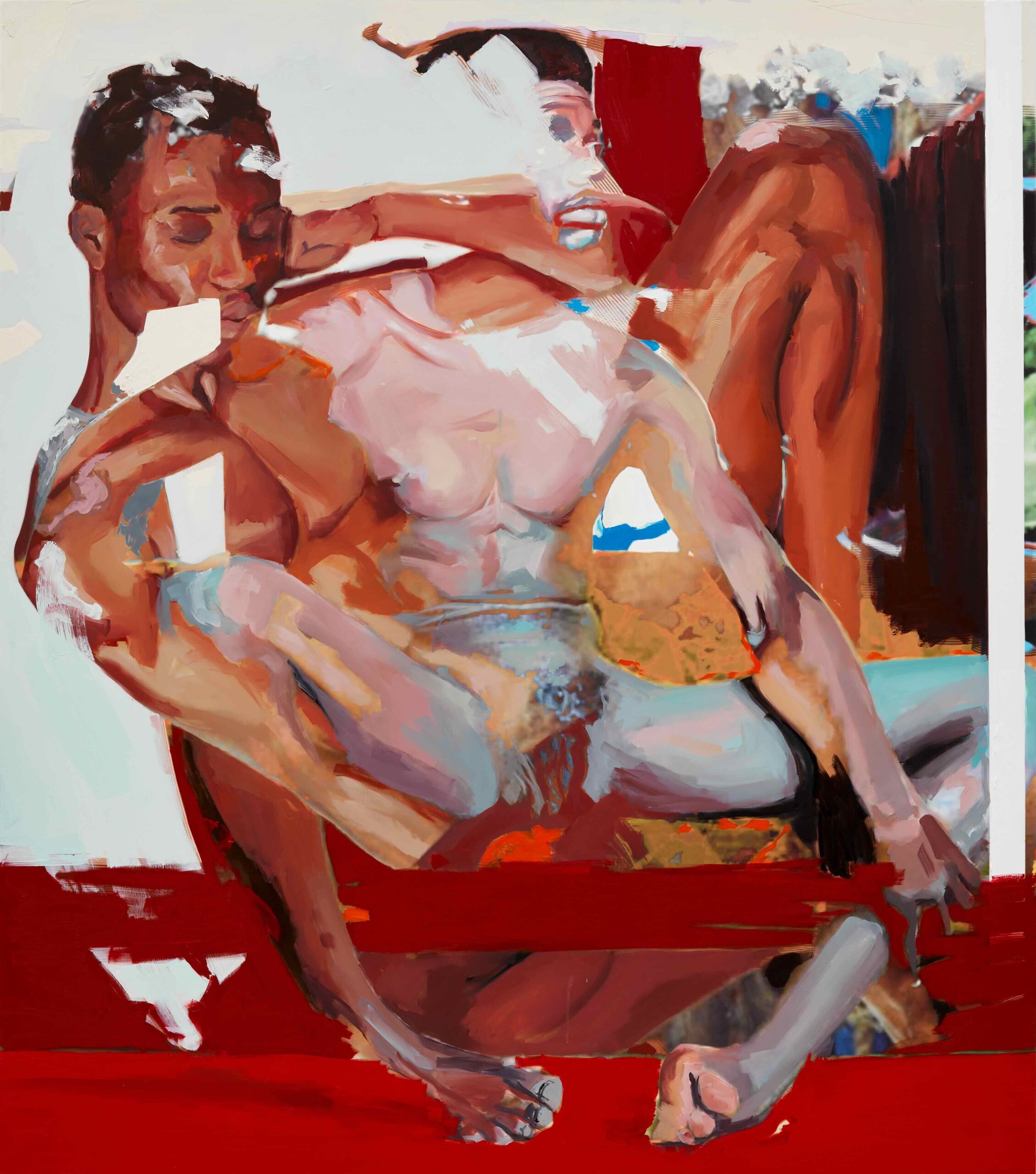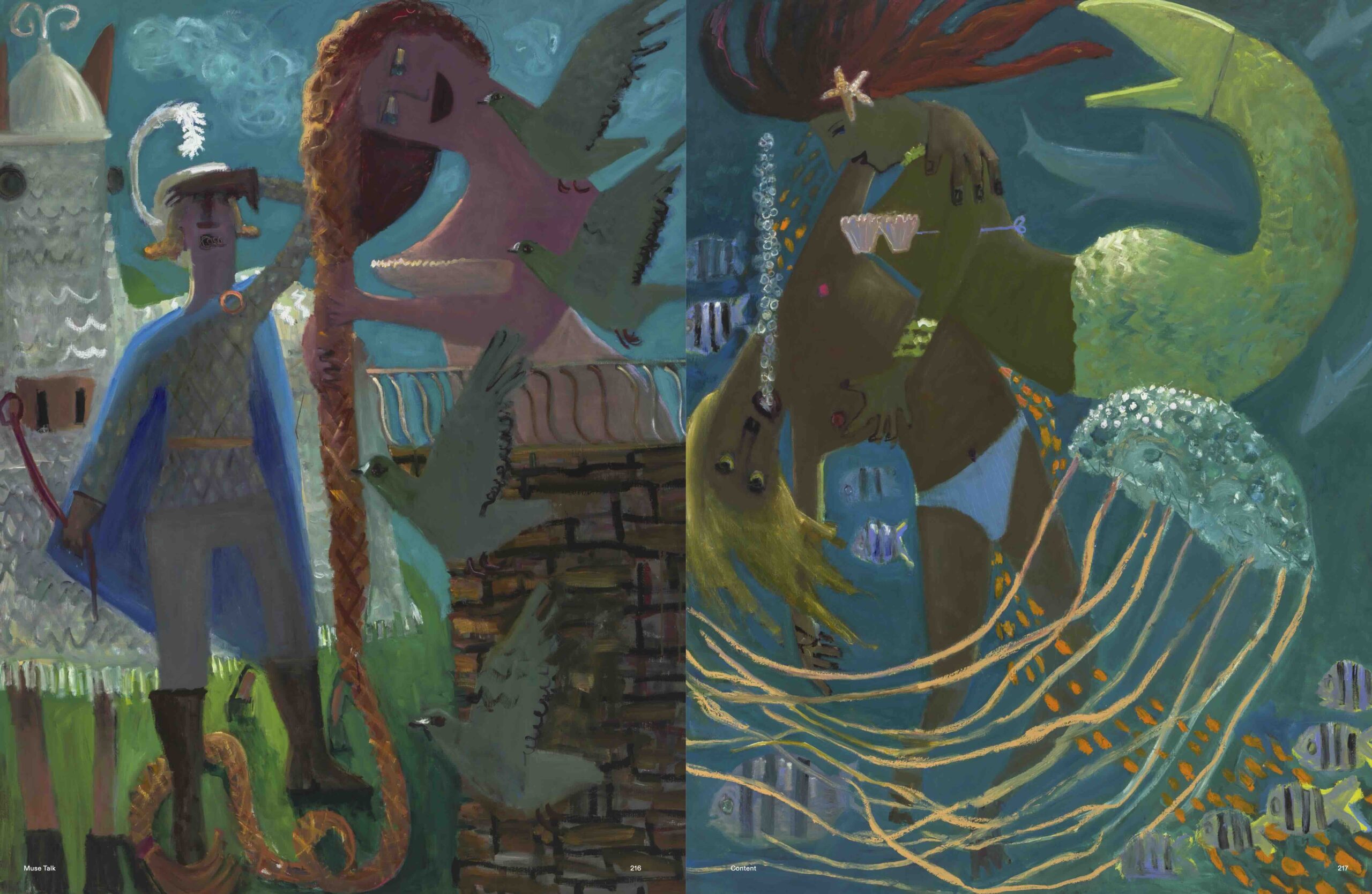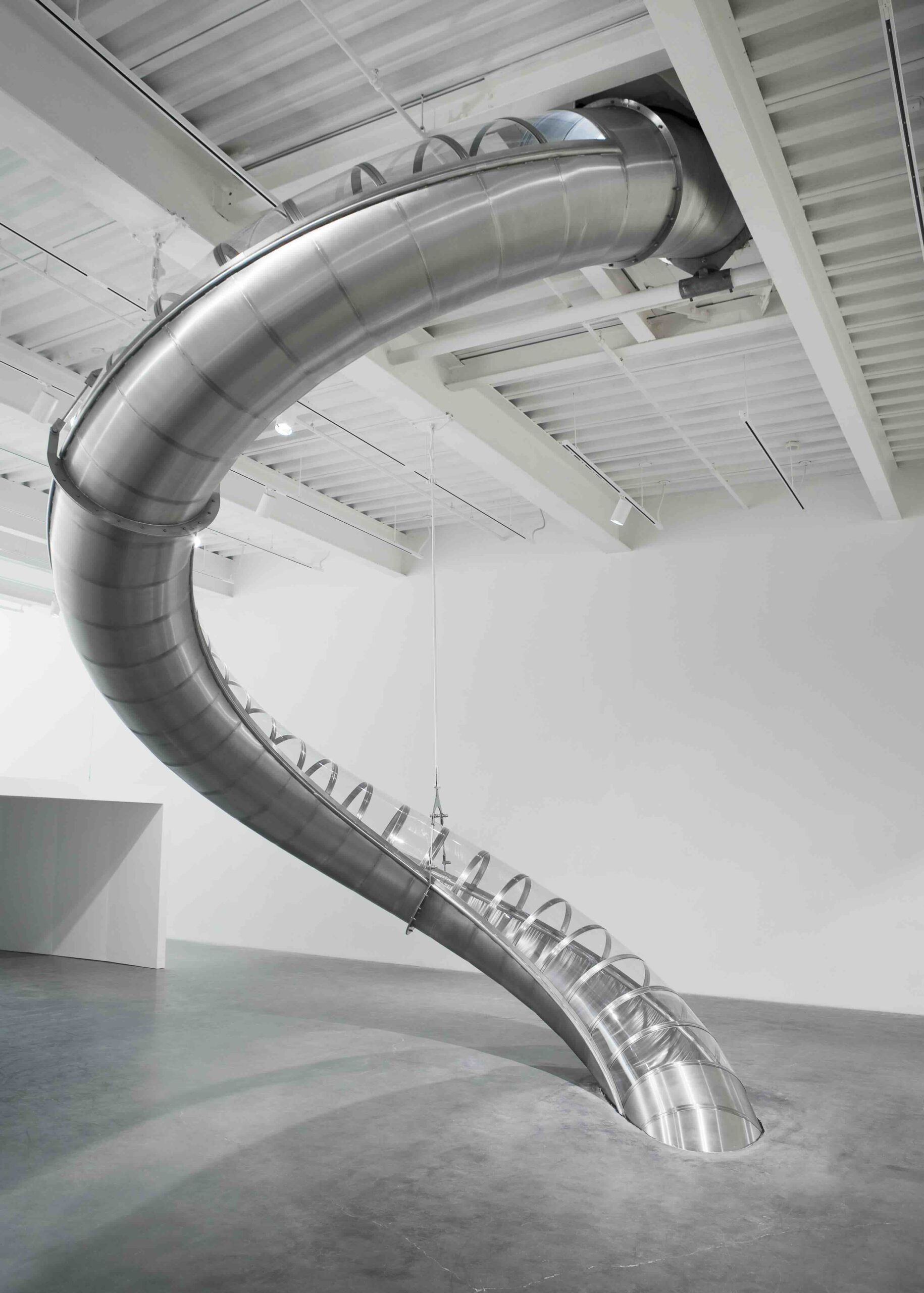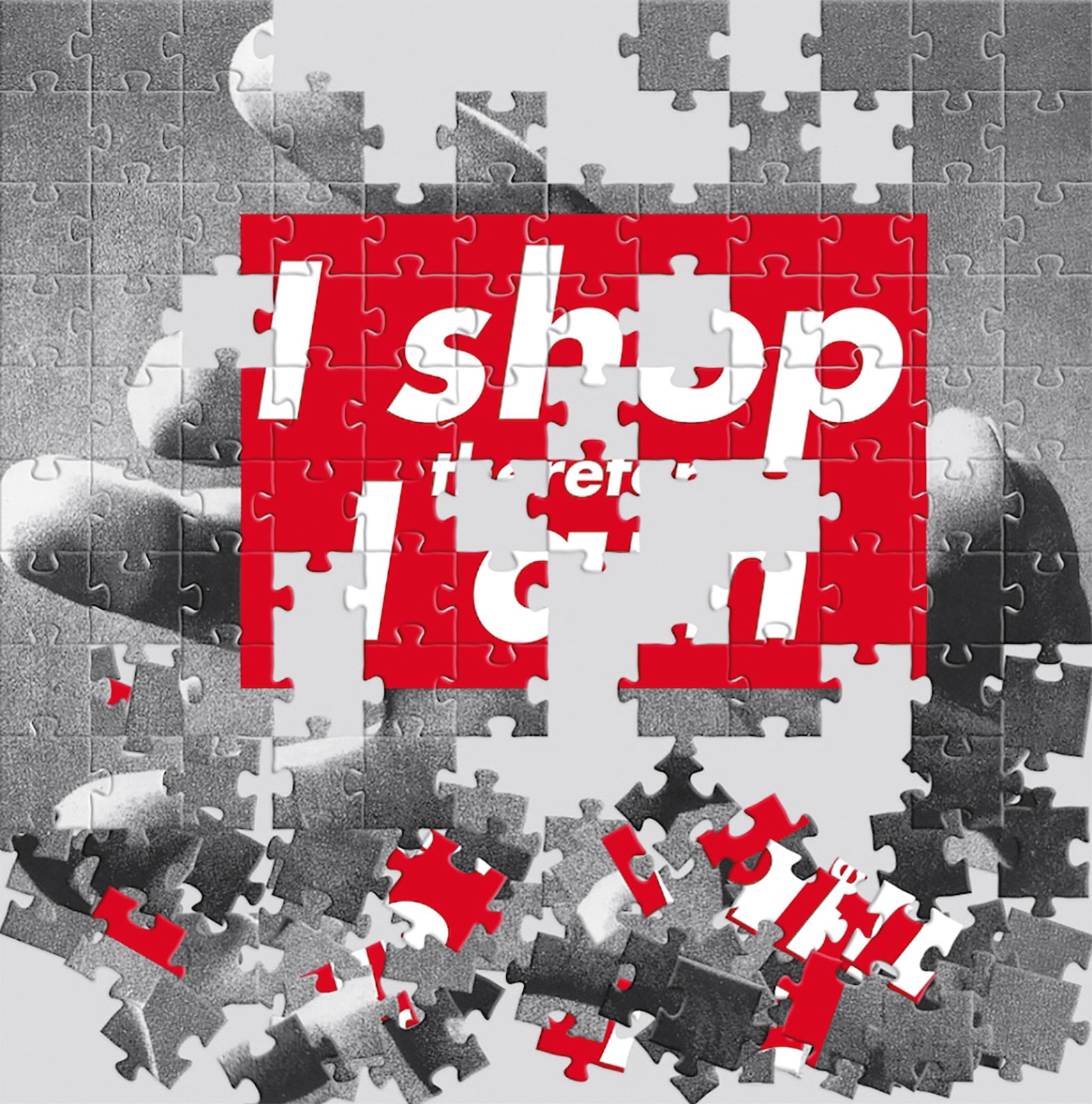London, January 17th, 2024
KUDZANAI-VIOLET HWAMI IN CONVERSATION WITH MARCO GALVAN
Her paintings combine visual fragments from a myriad of sources such an online images and personal photographs, which collapse past and present. Through her multidimensional artworks, she distorts personal memories and relationships through a digital lens, fusing traditional elements with contemporary digital aspects. Her distinct approach to portraiture breathes life into everyday moments, transforming them into thought-provoking spaces that challenge conventional perceptions of identity. Infused with vibrant colours, intricate textures, and digitally collaged imagery, each painting is a narrative exploring Hwami’s navigation as an artist and as a queer person of colour. Grounded in spiritual and historical narratives from her native Zimbabwe, her paintings eloquently unveil the intricate ways stories unravel across generations, histories, and geographies. The layers of her canvases transcend mere visuals; they represent a journey of migration, diaspora, and a longing to reconnect with cultural roots, as well as a critique of contemporary society’s portrayal of gender, sexuality, and the human body. In today’s digital world, Hwami’s mixing of timelines connects nearby and faraway places, present and past generations. Transporting viewers into a realm where time, memory, and identity converge, her work invites contemplation of the multifaceted nature of existence and our enduring ties to the past, surpassing mere capture of moments.
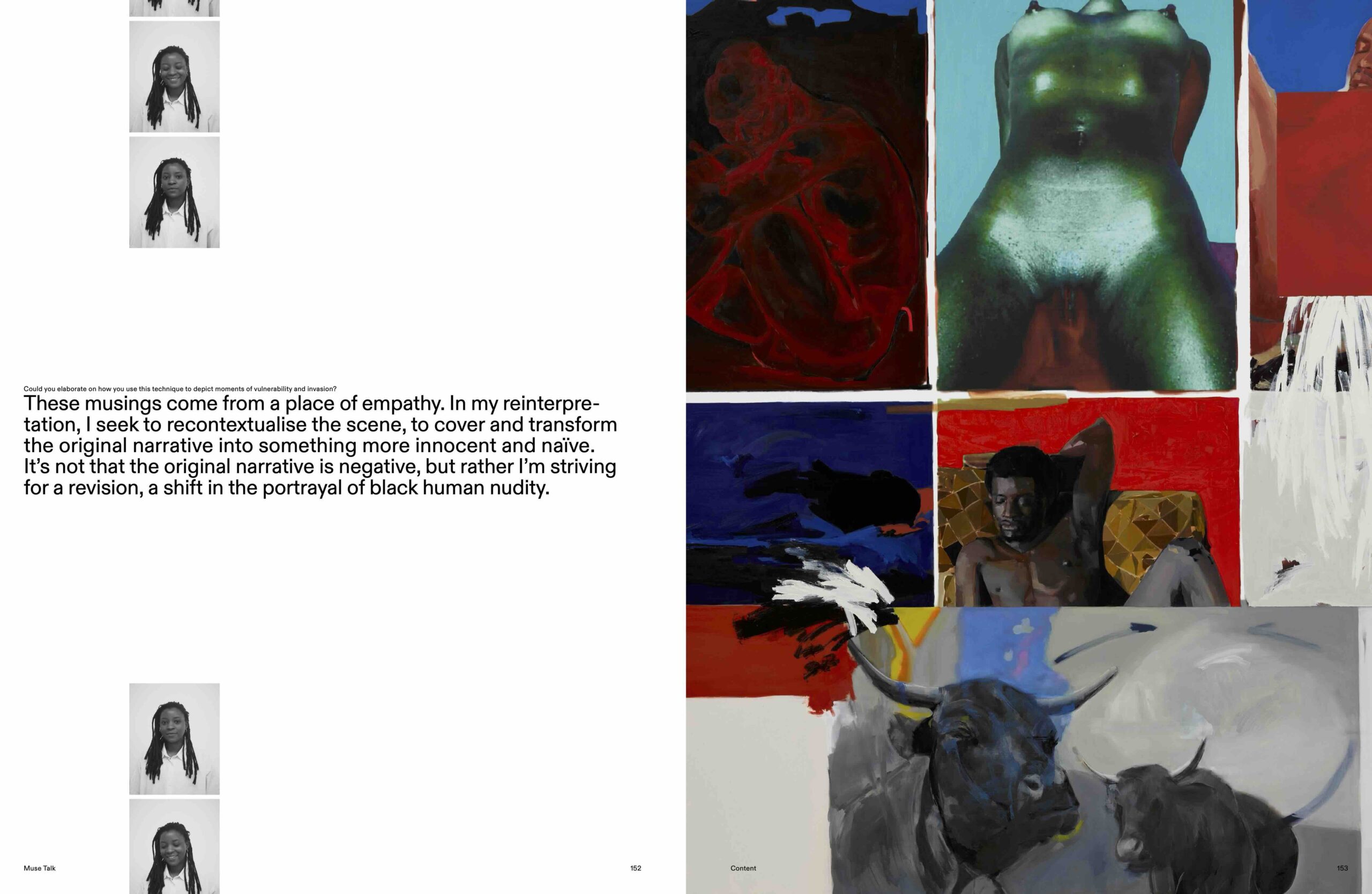
MG Your paintings draw from your upbringing in Zimbabwe and South Africa, incorporating visual fragments from various sources, such as portraits and internet images. How do these diverse influences shape the narrative in your paintings, especially in the context of collapsing past and present in your artwork?
KVH The paintings are simply an extension of the person I’ve come to be, the history and the people in my family who have contributed to making me who I am. I believe that each person we encounter embodies their own collapsing past and present, like a universe that contains many others. I think my paintings are more preoccupied with recording this, this network of interactions and possibilities which are reflective of how we each construct a sense of self, one which is in an ever state of flux.
MG Your installation for the 2022 Venice Biennale The Milk of Dreams integrated black-and-white vinyl photographs accompanied by audio tracks. How does this diversity of media reflects the interconnectedness of experiences?
KVH My intention with the Biennale project was to create an immersive environment, which stimulates and captures as many of the viewer’s senses as possible. I know, when I recall the things which have touched me deeply, the things which have truly left a mark on me, I recall far more than just the visual. With The Milk of Dreams I wanted to share something more intimate, the exhibition allowed for an expansion in my practice which felt natural and necessary to me. When I’m making, I feed on music, picture books, theatre, poetry and dance. I have discovered there is something quite liberating spilling past the parameters of the canvas.
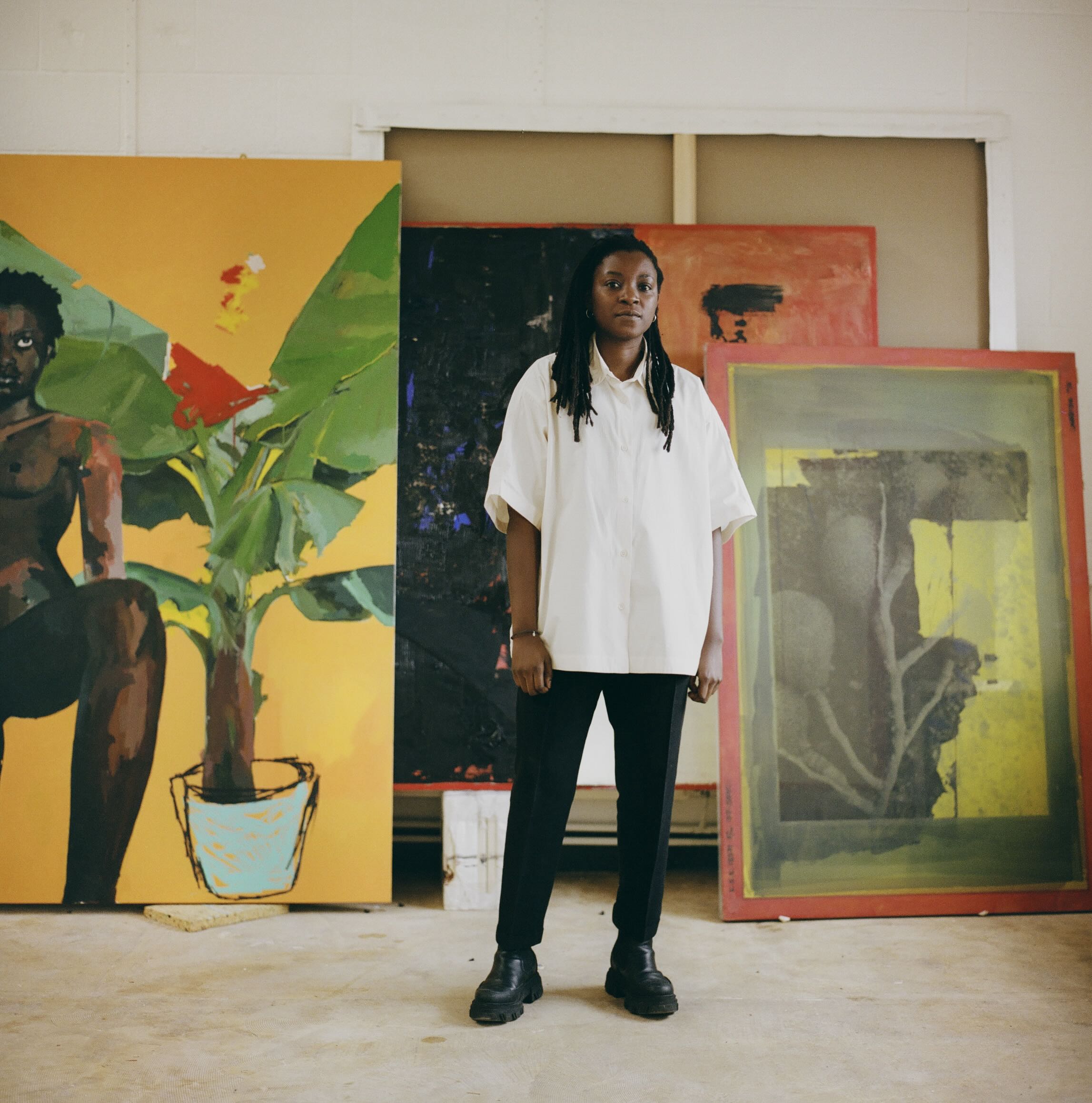
MG Reflecting magical realism and Afro-Futurism, in your paintings you often merge traditional cultural elements with contemporary digital aspects, raising critical questions about representation, sexuality, gender, and spirituality. How do nature and humanity coalesce within your work?
KVH In my work, post-humanity and nature coalesce more so than humanity and nature. With nudes devoid of genitals, pixelated images, etc, maybe my work seeks to frame an alternative where we are able to surpass biological limits in pursuit of liberation. (Maybe…) It’s a working progress! Alongside the duality of the masculine and the feminine, there is another great duality within me: a fascination with extreme modernity – for artificial intelligence, robots, holograms, interactive algorithms – and a strong desire to live in a remote place, in contact with nature. For me, nature not only provides all essential resources for human survival but serves as a fountain of creativity and ideas. This duality often erupts in quite a chaotic and contrasting way and is expressed in my works through the process of collage. I think it speaks of the complexities of our human condition, with disparate fragments having to coexist on one plane.
MG The paintings in your exhibition A Making of Ghosts at Victoria Miro present a unique interplay of scale and perspective. How does this intentional manipulation and fragmentation play into your exploration of constructing and presenting identity?
KVH In A Making of Ghosts, I emphasised the concept of fragmentation, playing a bit more with abstraction and extending the concept to the wallpapers I attached to the gallery walls. Also, in the text accompanying the exhibition, written by my brilliant friend Ruvimbo Gumbochuma, there is a kind of refrain that both breaks and simultaneously unites the rhythm of the litany. In this case, I wanted to give voice to feelings of disorientation and abandonment that had accompanied me during the previous year caused by grief and the loss of important people in my life. This was the way in which I wanted to represent the experience of feeling shattered.
MG Geographical dislocation and displacement seem to heavily influence your exploration of identity and community. Your way of representing the black body with dark tones often contrasts with vibrant colours and glimmering hues. How do these juxtapositions contribute to the tension between visibility and obscured identity in your paintings?
KVH The use of colour has less to do with meaning than style, in a sense it serves a practical purpose, in conceiving a composition which feels right to me. Beyond my intention to give visibility to the black human (and not body), in my work there is a lot of attention to detail, symmetry, and order. The final image is the result of an extended process during which there may be multiple repaints and changes in colour choices. I can see that my paintings from a few years ago were more colourful and light spirited compared to those I create now. Right now, my paintings and compositions seem to favour moodiness but I think this just reflects the natural ebbs and flows of life.
Read the full interview on Muse February Issue 63.

